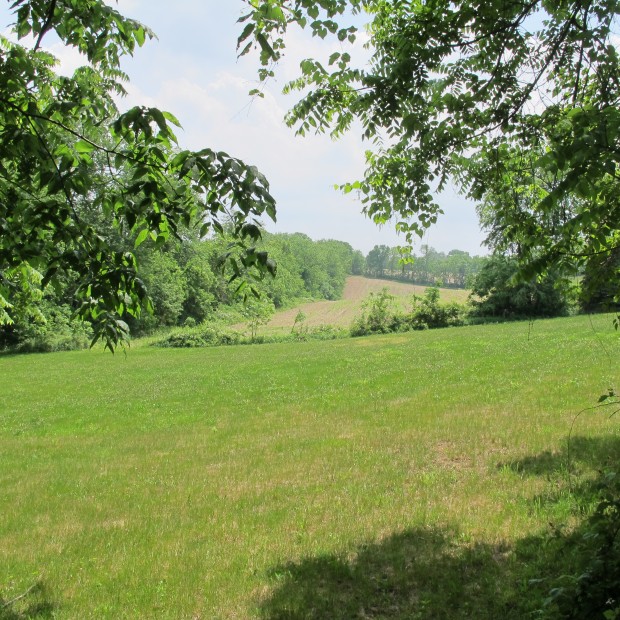PennEast pipeline environmental impacts would be minimal, say federal regulators
-
Jon Hurdle

Susan Phillips / StateImpact Pennsylvania
Part of the proposed PennEast pipeline could run through this stretch of land in Bucks County, Pa.
A plan to build the controversial PennEast natural gas pipeline from Pennsylvania to New Jersey took a step forward on Friday when the Federal Energy Regulatory Commission said the project’s environmental impacts could be reduced to “less than significant levels” if it adopts certain mitigation measures.
The proposed 119-mile pipeline from Luzerne County, PA to Mercer County, NJ could have “some adverse environmental impacts,” but those could be overcome if the builder and operator, PennEast Pipeline Company, takes steps recommended by itself and by FERC staffers, the federal agency said.
The commission said the decision was based in part on the fact that about a third of the route is along existing rights of way; that PennEast would control erosion, contamination and other negative effects, and that FERC staff would make sure the project complies with federal laws on endangered species and historic preservation.
The company welcomed the statement as “another major step forward” in the regulatory review of the project.
But the decision triggered a storm of protest from environmental groups who accused FERC of ignoring public opposition to the project, and of lacking the information to issue a credible Environmental Impact Statement (EIS.)
Maya van Rossum, who heads the environmental group Delaware Riverkeeper Network, (DRN) said FERC had not allowed enough time for public comment on the draft EIS by setting Sept. 5 as the deadline for responses.
“The deadline for comments is an offensive abuse of power and spit in the face of all the communities that will be so deeply harmed by this project,” van Rossum said in a statement. “FERC owes the communities at least 90 days.”
DRN and other environmental groups have attacked the pipeline as an unnecessary project, saying the region already has enough pipeline capacity for natural gas, and warning that it will threaten the environmental quality of the streams and wetlands that it would cross. Critics have urged landowners in both states to refuse permission for the company to build on their land.
According to Jim Waltman of the Stony Brook-Millstone Watershed Association, a New Jersey group that opposes the project, more than 9,000 residents across the two states have petitioned FERC to reject the project. About 77 miles of the line would be built in Pennsylvania, with the remainder in New Jersey.
The company says the pipeline would take cheap natural gas from Pennsylvania’s Marcellus Shale to utilities in New Jersey, New York City, and southeastern Pennsylvania.
PennEast spokeswoman Pat Kornick said the company has held more than 250 meetings with landowners, residents and public officials, and has made “dozens” of route changes to minimize environmental and community impacts.
Jeff Tittel, director of the New Jersey Sierra Club, which also has members in Pennsylvania, accused FERC of failing to look at secondary or cumulative impacts, and of not evaluating alternative routes.
“This application is a sham, and FERC seems to be more concerned about building pipelines than protecting the environment,” Tittel said in a statement. He called for a grassroots campaign to resist the project.
Critics of FERC, which regulates interstate pipelines, frequently accuse it of being a “rubber stamp” for gas industry pipeline projects.
Celeste Miller, a FERC spokeswoman, declined to respond to specific criticisms of the draft EIS, and said the agency’s response will be made in the final EIS which is expected in December. “Any comments … will be reviewed, evaluated and addressed in the final environmental impact statement,” she said.
While many opponents spoke against the draft EIS, van Rossum argued that it represents just another step in the pipeline process under the National Environmental Policy Act (NEPA) of 1970, and does not necessarily signal that the pipeline will be built.
Other approvals are needed from Pennsylvania and New Jersey; the Delaware River Basin Commission, and the U.S. Army Corps of Engineers, she said.
“NEPA is a law that is about information gathering and sharing,” van Rossum said. “It is not the arbiter of whether or not a project will succeed.”
















